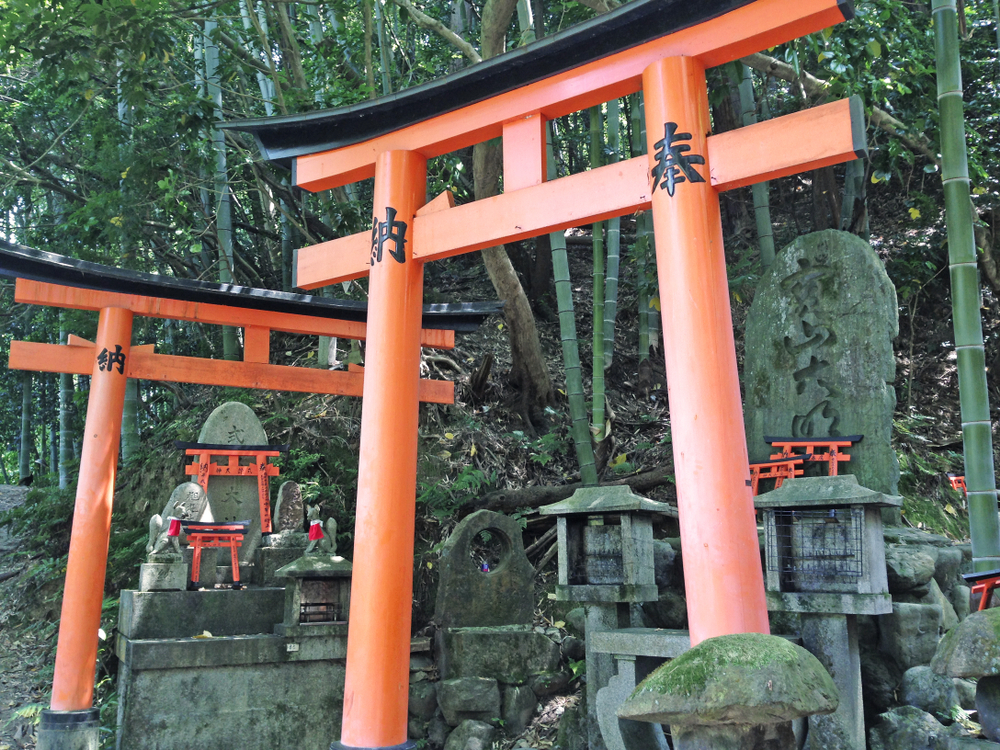
Shinto spirituality spans at least three millennia of Japanese history. As Japan’s oldest living faith, it includes a diverse collection of doctrines and ritual practices. Yet like other belief systems, it offers physical places in which people can honor kami, petition them for help, and draw deeper meaning from their spiritual experiences. Located all over the Japanese archipelago, these Shinto shrine structures offer an intriguing look into many Shinto spiritual traditions.
A Brief History of Shinto Shrines
The Ancient History Encyclopedia estimates that about 80,000 public Shinto shrines exist in Japan today. Historian Yoshiro Tamura traced the history of these shrines in his book “Japanese Buddhism: A Cultural History.” During the Yayoi cultural period, many communities tried attracting kami to ask for wise counsel and favorable harvests.
You may remember that kami are noncorporeal entities that inhabit all of existence. Dead ancestors can become kami. However, many of these entities also dwell in trees, mountains, rivers, or even forces of nature. These early villages established “yorishiro” or natural objects believed to draw kami. Physical buildings were later constructed at some of these sites. These structures eventually became shrines, or jinja. Some yorishiro are still present in modern-day shrine complexes.
Japan’s numerous jinja were built during different periods in the country’s history. One example is the Ise Grand Shrine complex in south-central Japan. Legend states that it was first founded around 4 B.C.E. However, the complex houses some structures erected during the Nara period between 710 and 784 C.E. Other shrines built during the eighth century C.E. include Fushimi Inari Taisha and Kasuga Taisha. One of the newest is Tokyo’s Meiji Jingu, completed in 1920 to honor Emperor Meiji and his wife, Empress Shoken.
Essential Elements in Shinto Shrine Construction
If you visit a Shinto shrine in Japan, you’ll notice that they’re surrounded by forests. Shinto priest Toya Manabu reveals that these aren’t virgin forests. They’re sacred woodlands, shaped and cared for by area residents over the last several centuries. These forests, along with the carefully maintained ecosystems around them, reflect the reverence for and coexistence with nature.
In another write-up for Nippon.com, Manabu describes some common shrine characteristics. The first structure you’ll encounter on a trip to a Shinto shrine is the torii, a tall red gate at the shrine compound’s entrance. Formed from two upright posts with two crossbars, they symbolize the sacred nature of the compound’s physical space. You’ll next walk down the sando, or worshipper’s path, leading into the shrine itself. You’d probably see shimenawa, or ropes tied around certain objects to signify their sanctity.
Upon approaching the shrine’s entrance, you’ll see it guarded by stone figures called komainu. They’re usually a pair of stone lion-dog figures that protect the kami’s space from evil. But before you enter, you must rinse in the clear running water of the temizuya. After this purification ritual, you can enter the worship area known as the haiden. This interior space is where you pay your respects to the kami.
Past the haiden, there’s another holy space in the shrine compound. Also known as a honden, it’s separated from the main sanctuary by a sacred fence called a tamagaki. The honden is the compound’s most holy place and where the kami resides within a divine object called a shintai. In some shrines, the kami lives within a sacred tree referred to as a shinboku.
Spirituality and Nature Within a Sacred Space
A Shinto shrine is a sacred place with a deeply calm atmosphere. They can display a wide range of architectural styles, based on when and where they were built. At the same time, they exhibit the natures of the kami to which they’re dedicated. Yet in their organization and construction, most of these shrines reflect some core Shinto values: nature, harmony, and reverence for the kami.

